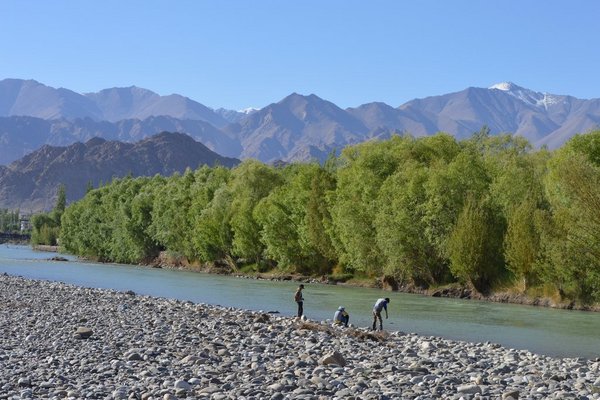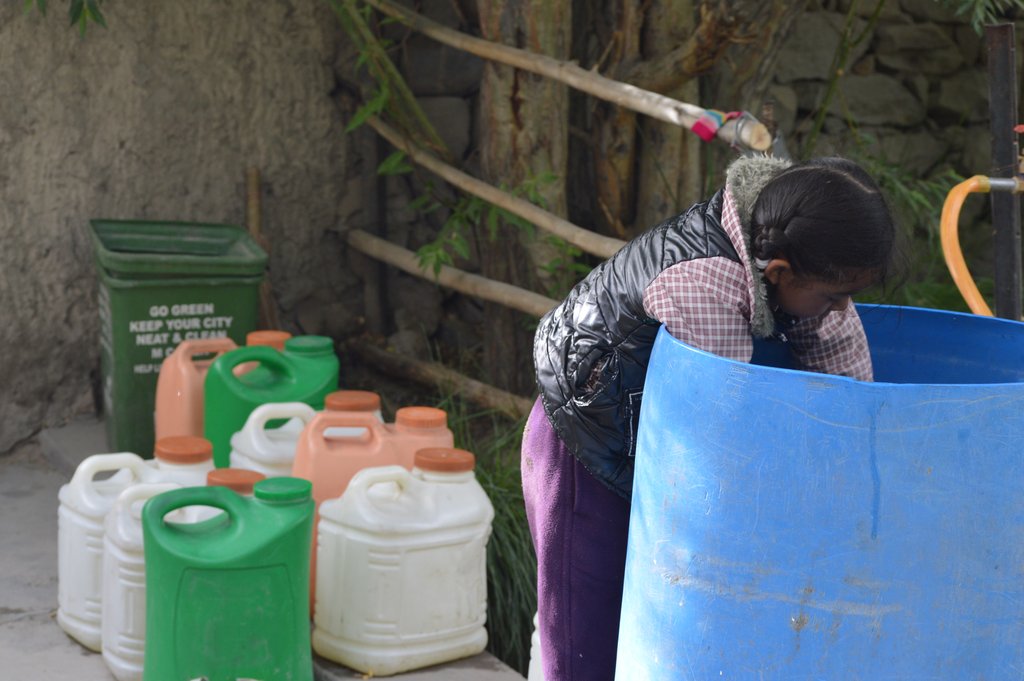- Share this article
- Subscribe to our newsletter
Experts call for urgent collaboration as South Asia's vital river basins face climate crisis
In a series of reports on the Brahmaputra, Indus and Ganges basins in the Hindu Kush Himalaya (HKH) in South Asia, experts have identified a lack of basin-wide planning, research, cooperation and data sharing as the main challenges in these areas, and have called for joint action and collaboration for dealing with these challenges as the demand for water from HKH is set to soar given population growth, the effects of temperature rise and development needs. The report series was released in Kathmandu, Nepal, on March 20th by the International Centre for Integrated Mountain Development (ICIMOD) and the Australian Water Partnership (AWP).
The reports have emphasised that collaboration among riparian countries in HKH in water governance is vital for sustainable energy strategies, water security and disaster resilience of the region’s population.
Strengthening the capacity of community groups
“Social marginalisation and climate change-induced vulnerabilities have led to entrenched forms of disadvantage and inequity. Therefore, it is crucial to support and strengthen the capacity of community groups, including networks of women, people with disabilities, indigenous groups, the landless, and other marginalised populations, to collectively voice their concerns in local, national, and transboundary dialogues and cooperation,” the report on Brahmaputra basin has recommended.
Calling for strengthening the capacity of the water and development sectors in South Asia, the report states that countries in the region would be able to boost sectoral capacities in water governance. For example, India’s north-eastern states, which are part of the Brahmaputra Basin, and Bangladesh could undertake integrated water resources management and climate resilient basin-level planning which fully considers especially affected groups. The reports on the Indus and Ganges basins have also recommended networking such sections of the population with female water professionals to collectively voice and amplify their concerns in local, subnational, national and basin-wide public debates, dialogues and cooperation.
Harnessing indigenous and local knowledge systems
The three reports emphasise the need for scientific, inter-governmental and other collaboration but also the importance of harnessing indigenous and local knowledge systems. “These hold so many insights into how local communities can act to resolve problems quickly and effectively during a crisis. Governments need to empower local communities with knowledge and technology to nurture their resilience in the face of rising uncertainty," says Russell Rollason, lead author of the report.
A young girl in the Ladakh Himalayas taking stored water from a tank. People in Leh town say that water scarcity has started to hit the region. Photo: Athar Parvaiz
Health and livelihoods of over one billion people affected
The three river basins are associated with the future of over one billion people, especially people living in mountainous and rural areas where they face threats from floods and droughts which impact their health and livelihoods.
The Indus basin stretches across around 3,200 km and is a major source of water for drinking, household use, irrigation and energy production for its 268 million inhabitants. “Changes in precipitation, vulnerability to catastrophic events, and increased variability in water availability will affect all four basin countries Afghanistan, China, India, and Pakistan,” says the report on Indus basin, adding that in the latter two countries, where water supply is already stressed and storage capacity is low, water demand is predicted to rise by 50 per cent by 2047, with climate change alone responsible for up to 15 per cent of this increase.
One of the poorest regions in the world
Six hundred million people in India, just under half the country’s entire population, and all of Nepal’s population of 29 million live in the Ganges basin, as do millions in Bangladesh. “Some of South Asia’s poorest and most marginalised populations live on the banks of the river, and are dependent on it for fishing, tourism, and aquatic ecosystem services for their livelihoods. FAO has dubbed it one of the poorest areas in the world,” says the report on Ganges basin, adding that one third of the total 200 million Indians in the basin are living below the poverty line and rely on the river for food, drinking water and agricultural employment.
“Disastrous floods already happen yearly, and during the dry season water scarcity and droughts are already common. Both are likely to increase in both frequency and severity due to climate change,” the Ganges report further says.
Biodiversity hotspots at risk
Approximately 114 million people depend on the Brahmaputra basin for water, electricity, food, agriculture and fishing – 58 million in Bangladesh, 39 million India, 16 million in China and 700,000 in Bhutan. “It is one of the world’s most densely populated, and least developed zones, and it spans two of the world’s 36 biodiversity hotspots. Rising demand for food, energy, and water in the basin countries is putting pressure on the river’s water resources and biodiversity conservation areas,” says the report on the Brahmaputra basin.
Athar Parvaiz is a freelance journalist based in Srinagar/ Kashmir, India.
Contact: atharparvaiz.ami(at)gmail.com






Add a comment
Be the First to Comment